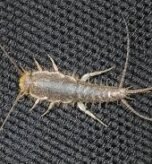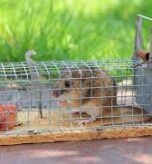Cockroaches are a common and unwelcome pest, notorious for their unsanitary habits. While many are familiar with these insects, a common question is whether they can fly. This comprehensive guide aims to demystify the airborne capabilities of flying cockroaches, explain why they take to the air, detail the associated risks, and provide actionable strategies for effective control.
Do All Cockroaches Fly? Debunking a Common Myth
The belief that all cockroaches can fly is a widespread myth. In reality, the ability to fly varies significantly among the thousands of cockroach species. While most adult cockroaches have wings, they are not always well-developed for sustained flight. In fact, many species prefer to crawl and only use their wings for short bursts or gliding. Furthermore, the ability to fly is often influenced by sex, with males typically being stronger fliers. Importantly, immature cockroaches, known as nymphs, are wingless and cannot fly.
Common Species of Flying Cockroaches
Several cockroach species are known for their ability to fly or glide.
- American Cockroaches: One of the largest species in the U.S., they can glide short distances, especially when it is hot.
- Asian Cockroaches: These are strong fliers and are attracted to lights, often entering homes in the evening.
- Australian Cockroaches: Primarily found in the Gulf Coast, these are proficient fliers that thrive in warm, humid conditions.
- Pennsylvania Wood Cockroaches: Only the males of this species can fly. They typically live outdoors but may enter homes during their breeding season.
- Smoky Brown Cockroaches: These are also capable fliers known for entering homes and contaminating food.
Cockroach Species That Do Not Fly
Despite having wings, some common species rarely or never fly.
- German Cockroaches: The most common household pest, German cockroaches have wings but cannot achieve sustained flight. They usually glide for short distances when disturbed.
- Why Do Cockroaches Fly?
Flying cockroaches primarily take to the air as a survival mechanism.
- Self-Protection: Flight is a quick escape when they feel threatened by predators or human activity.
- Temperature Regulation: When temperatures rise above 85°F (29°C), they may fly to find a cooler environment.
- Searching for Resources: If food or water becomes scarce, flight allows them to travel to new locations.
- Accidental Encounters: When a cockroach appears to fly directly at you, it is typically not an aggressive act. They are often startled and gliding uncontrollably, possibly drawn by a light source behind you.
How Flying Cockroaches Get into Your Home
Flying cockroaches can infiltrate your home through various entry points, drawn by the promise of food, water, and shelter.
- Entry Points: Common entryways include open doors and windows, especially those without screens. They can also sneak in through cracks in walls, gaps around utility lines, or inside boxes you bring into the house.
- What Attracts Them: These pests are consistently drawn to leftover crumbs, grease spills, unsealed food containers, pet food left out overnight, and leaky pipes. They also seek shelter in dark, cluttered spaces like piles of cardboard or behind appliances.
The Serious Risks Posed by Flying Cockroaches
While they do not typically bite, flying cockroaches pose considerable indirect threats to human health.
- Disease Transmission: They are carriers of numerous harmful bacteria, including E. coli and Salmonella. They frequent unsanitary places like garbage bins and sewers and can contaminate your food and kitchen surfaces.
- Allergies and Asthma: Cockroach droppings, shed skins, and saliva contain proteins that can become airborne. When inhaled, these allergens can trigger allergic reactions and worsen asthma symptoms, especially in children.
- Contamination and Odors: In large infestations, they can leave stains and emit a musty, unpleasant odor that degrades the hygiene and comfort of your home.
Effective Strategies to Control Flying Cockroaches
Addressing an infestation of flying cockroaches requires a multi-faceted approach that combines diligent prevention with targeted control methods.
1. Enhance Sanitation and Control Moisture
Thorough and consistent cleanliness is your first line of defense.
- Kitchen Hygiene: Regularly clean kitchen surfaces, stovetops, and under appliances to eliminate food crumbs and grease.
- Food and Waste Storage: Store all food in airtight containers and use trash bins with tight-fitting lids.
- Moisture Control: Promptly repair any leaky faucets or pipes. Ensure damp areas like bathrooms and basements are well-ventilated and dry.
2. Seal Entry Points and Reduce Clutter
Cockroaches can squeeze through surprisingly small openings.
- Seal Cracks and Gaps: Conduct a thorough inspection and use caulk to seal any cracks in your walls, floors, and around pipes.
- Install and Repair Screens: Make sure all windows and doors have intact, fine-mesh screens.
- Declutter: Minimize hiding spots by getting rid of old newspapers, boxes, and piles of clothes.
3. Use Natural Remedies and Traps
For a less toxic approach, several natural deterrents can be effective.
- Bay Leaves: Cockroaches are repulsed by the smell. Place fresh or crushed bay leaves behind appliances and in cabinets.
- Vinegar and Peppermint Oil: A spray solution of vinegar and peppermint essential oil can be used in kitchens and bathrooms to repel pests.
- Baking Soda and Sugar Trap: Mix equal parts baking soda and sugar. The sugar attracts the roaches, and the baking soda is lethal to them.
- Duct Tape Trap: Place a strip of duct tape sticky-side up with bait in the middle. Roaches will get stuck trying to reach the bait.
When to Call a Professional Pest Control Service
While DIY methods can offer temporary relief, a professional pest control service is often the most effective way to eliminate flying cockroaches for good, especially for persistent or large infestations.
- Expert Evaluation: Professionals conduct comprehensive inspections to pinpoint entry points and nesting areas.
- Targeted Treatments: They use specialized treatments like gel baits and insect growth regulators (IGRs) that target roaches at all life stages.
- Holistic Approach: They employ a strategy that focuses on elimination and prevention, often minimizing the use of chemicals.
Conclusion
Flying cockroaches, like their crawling counterparts, pose significant health risks and create discomfort in any home. Understanding their behaviors and attractants is crucial for effective management. While diligent sanitation and home sealing can prevent minor issues, persistent infestations often require the expertise of a professional. By taking a proactive approach, you can effectively mitigate the presence of these unwelcome guests and maintain a healthier living space.



